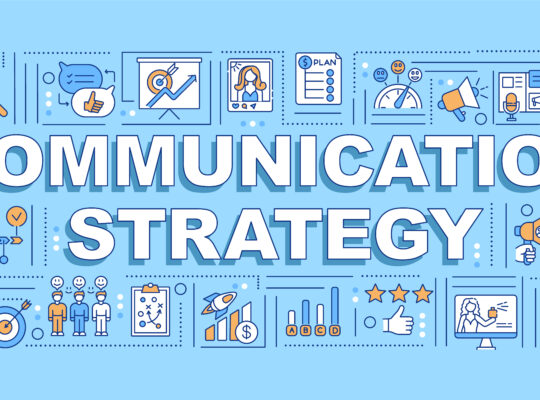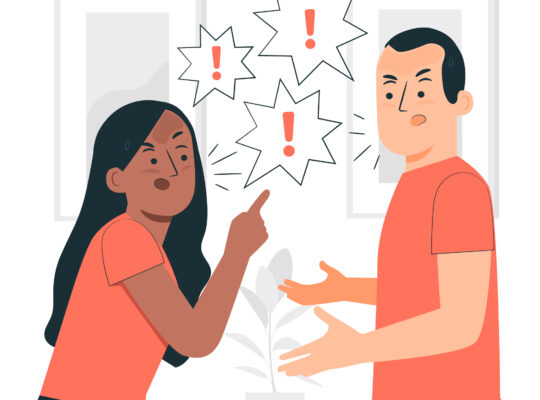| Communicating with Confidence | ||
| Instructor: Jeff Ansell | ||
| Released: 7/29/2019 | Course Details 1h16m General | |
| Skills Covered Public Speaking | Course Link | |
| Professional Certifications and Continuing Education Units (CEUs) N/A | ||
Be A Better Communicator
What makes a good speaker?
Confident Communicator
Look like you mean what you’re talking about and sound like you mean what you’re talking about.
Confident communicators connect to others through words, gestures, and voice.
The Three V’s
- Visual – How we look and carry ourselves
- Vocal – how we sound, our tone and volume
- Verbal – The words we use to communicate
- 55% visual / 38% vocal / 7% verbal
What holds people back?
Vulnerability
- What if I say something wrong?
- What if they think I’m boring?
- What if I lose my place?
High Expectations
Feeling a need to be perfect
Lack of Preparation
Feeling they don’t know their subject well enough
Fear of an Audience
- What if they challenge me?
- What if they disagree with me?
- What if they ask a question I can’t answer?
Past Experiences
Bad past experiences can also lead to holding people back.
Racing Brain Syndrome
When what you’re saying and what you’re thinking are out of sync.
Sometimes people try too hard to be a confident communicator.
Connecting with yourself
Endless Loop Trap
People keep repeating the same ineffective patterns in communication.
What words would I use to describe how I want to be seen and perceived in this moment?
Connecting with others
Two-Way Communication
The delivery of one thought at a time. Gauge if your audience understands the information. Pay more attention to the audience. Pay attention to how people receive information. Delivery one thought at a time. Be agile and responsive in the moment
Breathing properly
Holding your breath makes you feel more tense and less natural.
Autonomic Nervous System
- The release of cortisol, norepinephrine and noradrenaline in our system
- Increased heart rate
- Higher blood pressure
- Dilated pupils
- Decreased saliva
- Increased sweat
- Deprived oxygen
Anxiety induces fight-or-flight reflexes.
Learning to breathe properly helps us soothe the autonomic nervous system.
Ujjayi Breathing
- Ujjayi breath is diaphragmatic breathing.
- Pull belly in and exhale through nose
- Inhale and relax belly muscle
- Do not move chest
- Breathe out, belly in, breathe in, belly out
- Ujjayi breathing puts pressure on the diaphragm, which activates the vagus nerve and produces relaxation.
Honing Your Message
Knowing what to say
Use simple words. Use short sentences. Identify your desired outcomes. Determine the words that best illustrate how you want to come across.
Organizing your thoughts
One thought on one index card.
Purpose
- Is the presentation to inform or persuade?
- Is the presentation aimed at getting the audience to take action?
- What do I hope to accomplish with the presentation?
Main Idea
- Three or four principal points you want to communicate to your audience.
- Write each main idea on separate cards
Details
- These bring the main ideas to life.
- One detail per index card, bullet point form. Use as few words as possible on each card
- Information relevant to the audience
- Statistics
- Descriptive word pictures
- Anecdotes/analogies
- Visual aids
Introduction
- Must give the audience a reason to listen
- Give your audience a stake
- Give the audience a reason to listen to you
Conclusion
- Part of the presentation people remember best
Call to Action
Tell your audience what you want them to do or what you need from them as a result of your information.
Say It Like You Mean It
Making every word count
Express words meaningfully by making every sentence sound different. Enunciate every word.
Enunciation Exercise
- Hold a pen between your teeth (don’t bite down just hold it)
- Read and enunciate each word
- Do this for 60 seconds, really putting your lip and face muscles to work
Sounding confident
Uptalk
Undermines our authority and makes us sound uncertain. It makes it sound like every sentence ends with a question mark.
Hedging
Using qualifying phrases like “sort of”, “kind of”, or “it seems like”
New Topic
Change your inflection or tone when changing topics
Power of the pause
Pausing lets a speaker connect with people in a meaningful way.
Why do listeners need you to pause? Listeners need to hear, listen, think, process, assimilate and store what was said.
What does pausing accomplish for the speaker? Adds emphasis
When to pause
- Before and after each sentence
- After something important
- After a rhetorical question
- After a request or call to action
Slowing down
Stretch the vowel sounds in each word. Visualize your brain and tongue moving in perfect synchronicity. Talking slowly helps you control what you say. Only say the word you want (not um, uh, or other noise).
Slowing Down Exercise
Audience claps when the speaker says “uh” or “um”.
Look Like You Mean It
Using your eyes
Deliver one thought to one face at a time. Keep your eye contact with the audience to emphasize a powerful line. Making eye contact with one person can help calm you. Hold eye contact without speaking to appear confident. Practice eye contact in everyday conversations.
Talking with your hands
Is it okay to use your hands when you speak?
Talking with your hands
- Helps you think
- Makes you look interesting
- Makes you sound interesting
- Makes you look like a leader
- Helps you stay calm
Gesturing naturally
Change the motion of your hands to match the content. Sometimes big gestures aren’t called for.
Too much hand movement
- When it makes no sense
- When it’s repetitive
- When it doesn’t match your message
Managing facial expression
Visualize what you’re talking about. Reflect the mood and tone in your eyes. Convey confidence, conviction, and connection. Looking down and off to the side makes us look thoughtful.
Confronting Anxiety
Handling nervousness
Body language leakage
Anxiety expresses itself and reveals our unease. It comes out via tells, which is an indicator that the speaker is nervous.
Tells
- Speaking quickly
- Touching our glasses/hair
- Use throwaway words like “you know” or “like”
- The swallow – gulping involuntarily
- The pursed lip
- Fidgeting or moving around
- Excessive blinking
Begin your presentation by asking a question.
Nervousness is common
“When I speak in public. I’m not important”. Don’t try to be a perfect presenter. The information you are conveying is important and the means to convey it is important but the presenter itself is not important.
Making fake confidence real
Looking strong can give genuine confidence. You may start “faking” confidence but you will quickly gain real confidence as you start speaking.
Conclusion
FAQ
- What do I do if a question flusters me? Use the flutter strategy.
Fluster Strategy
- Breathe
- Say “excuse me” or “I beg your pardon”
- Please help me understand the context to the question
- What do I do if someone clearly disagrees with me or doesn’t believe what I’m saying? Ask them questions to get to the core of their concerns, peel away the onion.
- What do I do if my audience seems uninterested? Pause for 3 to 5 seconds, remember to breathe. Silence is a powerful thing.
- What do I do if someone is texting or emailing while I’m speaking? Walk over and stand near that person while you continue to talk. You may also want to give them the benefit of the doubt as they may be dealing with something pressing.
- What do I do if someone interrupts me while I’m in the middle of making my point? If it’s your boss, then the interruptions should be encouraged as it means they are trying to understand your main point. If it’s a colleague, ask them for a bit more time to finish your point. Don’t be adverse to interruptions as it may bring the conversation in a different, more important direction.
- What do I do if I’m asked a question I don’t know the answer to? Tell them you want to be exact and precise with the information so you will get back to them with that information.
Hand gesture coaching
Real world example on how to utilize hand gestures in a presentation.
Slowing down coaching
Real world example on how to slow down in a presentation.
 | Remember! To experience the full benefit of this guide, I highly recommend you watch the full training session. |






